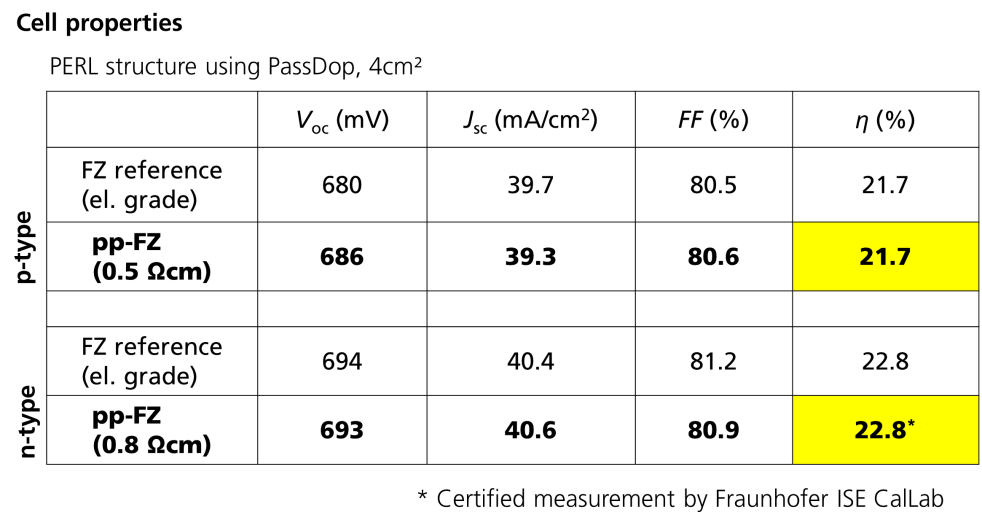
The Float Zone (FZ) method allows the growth of silicon crystals with one to two orders of magnitude lower oxygen concentrations than any other growth method is able to. This makes FZ wafers exceptionally suited for power electronics, where low oxygen is mandatory, but also for high-efficiency solar cells, since no degradation by the formation of boron-oxygen complexes will occur. FZ growth chambers are free of any carbon based parts, reducing the carbon concentration in the grown crystals significantly, compared to e.g. Czochralski crystals. The growth rate itself is about a factor of 2 higher than it is achievable by standard pulling processes. Further, rather uniform axial resistivity profiles can be achieved by doping the ingots during the growth process by the gas phase. The lower energy consumption and the lack of any crucible or hot-zone consumables result in an attractive cost-of-operation profile.
Beside the above listed advantages, certain difficulties have to be mentioned dealing with the FZ process: the specification of the poly-silicon feed rods needed for the FZ process is very tight, the rods have to be crack-free, with a low bow, a smooth morphology, and a diameter in the same range as the anticipated FZ ingot. The market price for high-quality FZ-feed rods is significantly higher than it is the case for standard poly-silicon chunks or granular material.
An attractive alternative to poly-silicon feed rods produced by the Siemens-CVD process (the standard method for poly-silicon FZ feed rod material) is the pre-pulling of feed rods from the melt using a modified, cost-optimized pulling configuration. This approach allows the use of standard solar grade poly-silicon (e.g. broken chunks), nowadays easily available on the market.
Our investigations show both: (1) the efficiency of the resulting solar cells is comparable to commercial electronic-grade Float-Zone material (see figure) while (2) the cost structure of our FZ process based on pre-pulled feed rods is favorable compared to a standard process using poly-silicon feed rods from CVD reactors.
 Fraunhofer Center for Silicon Photovoltaics CSP
Fraunhofer Center for Silicon Photovoltaics CSP